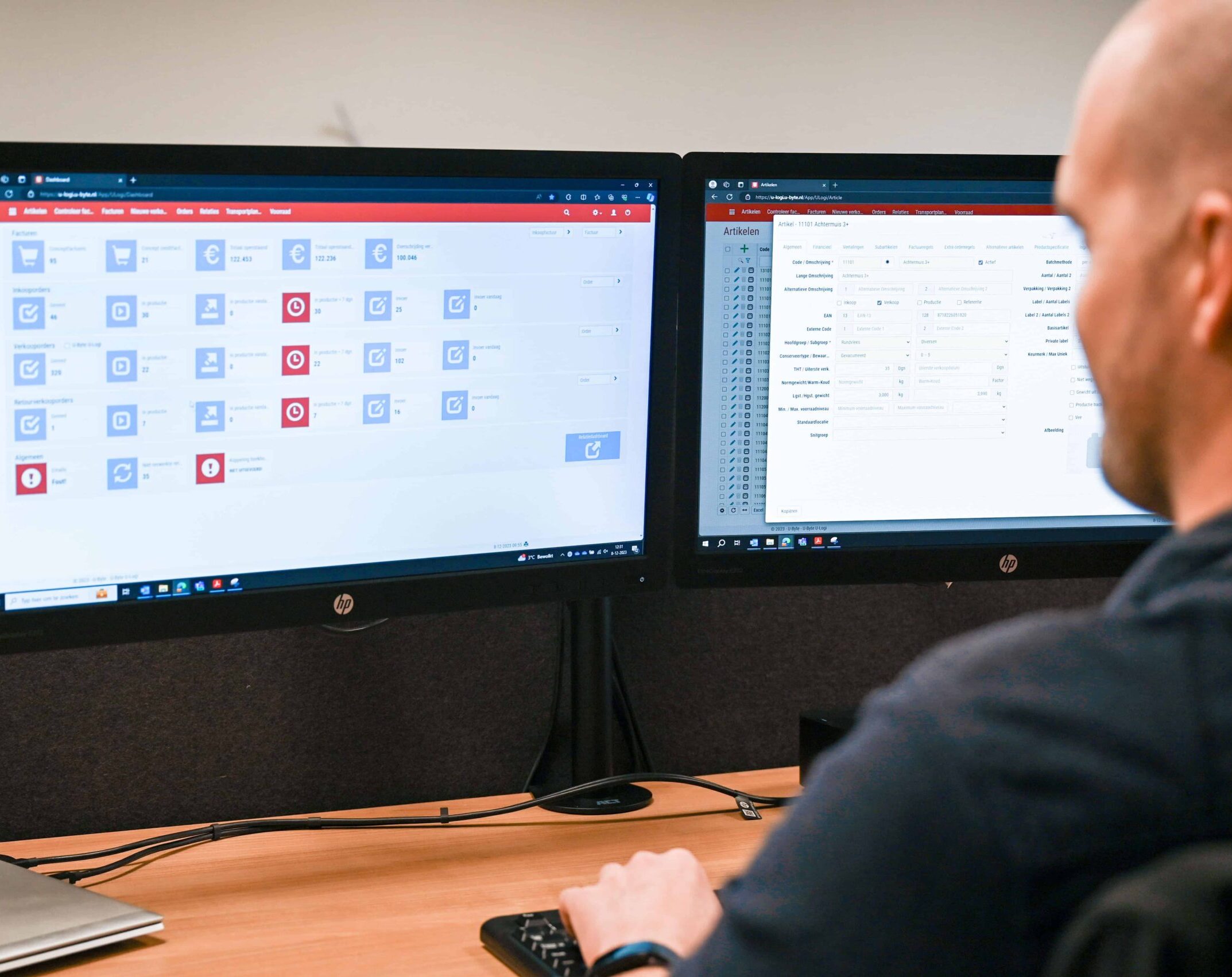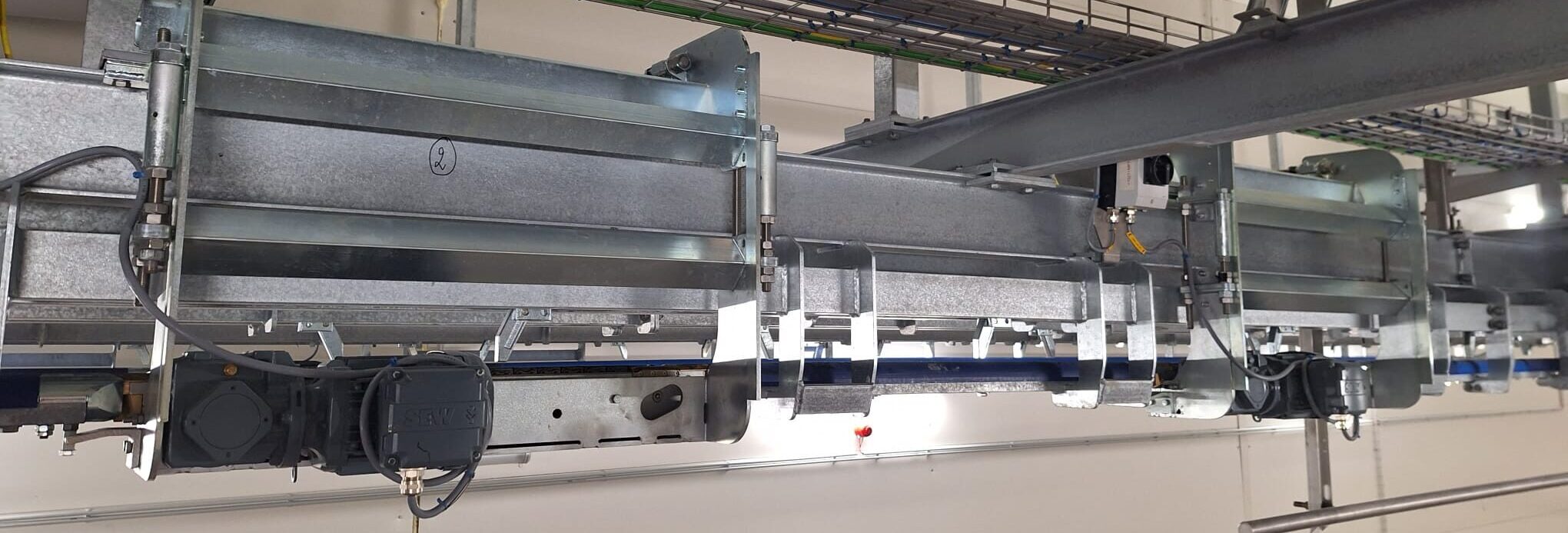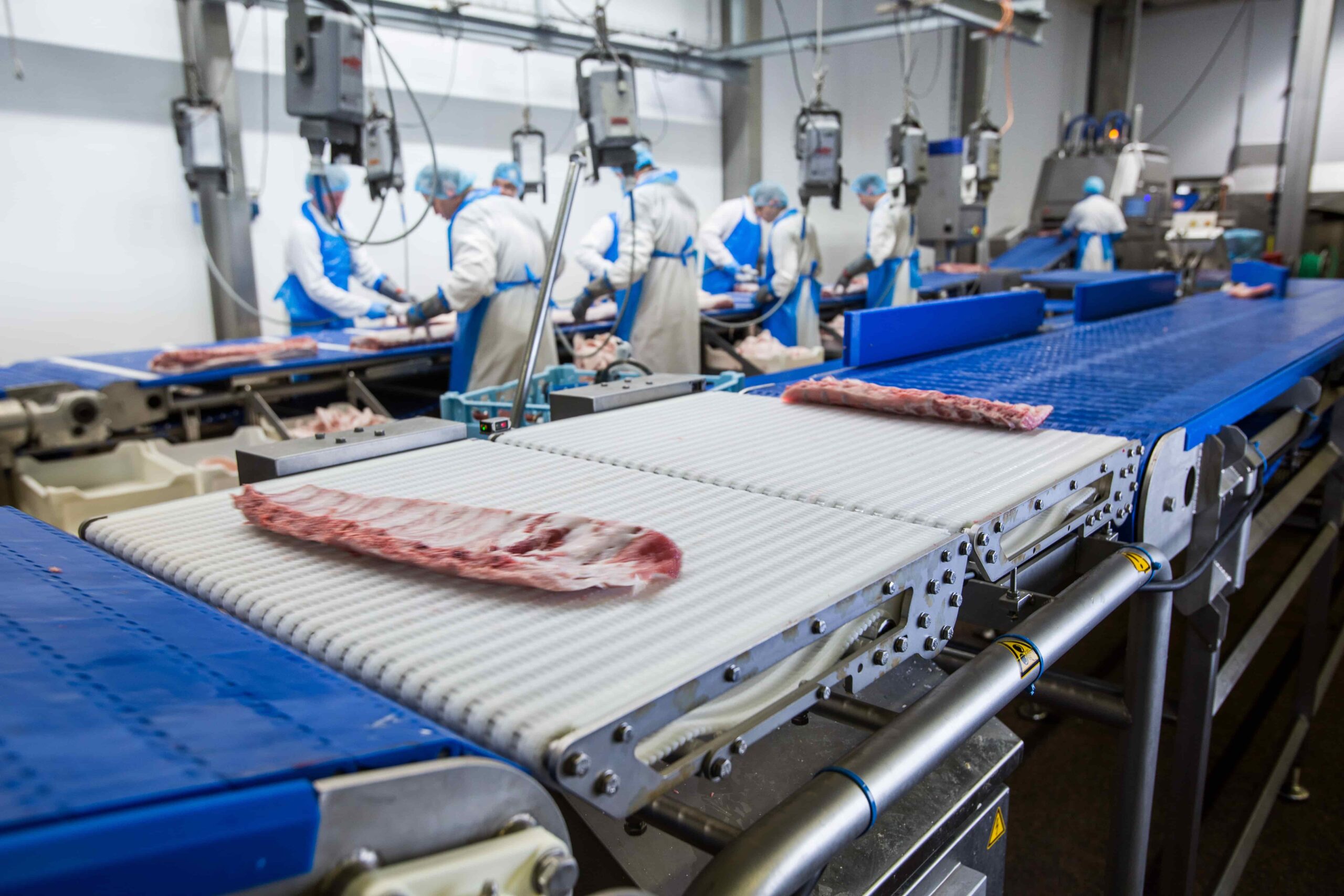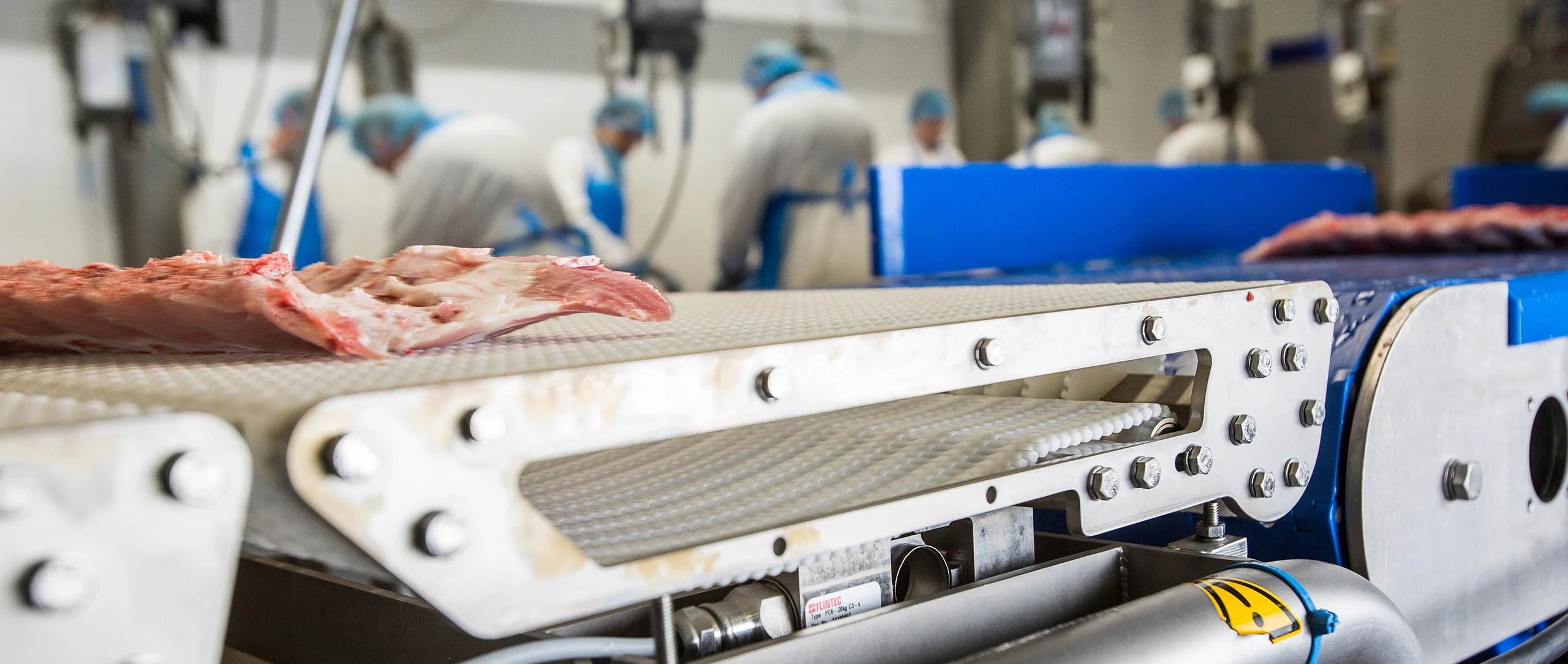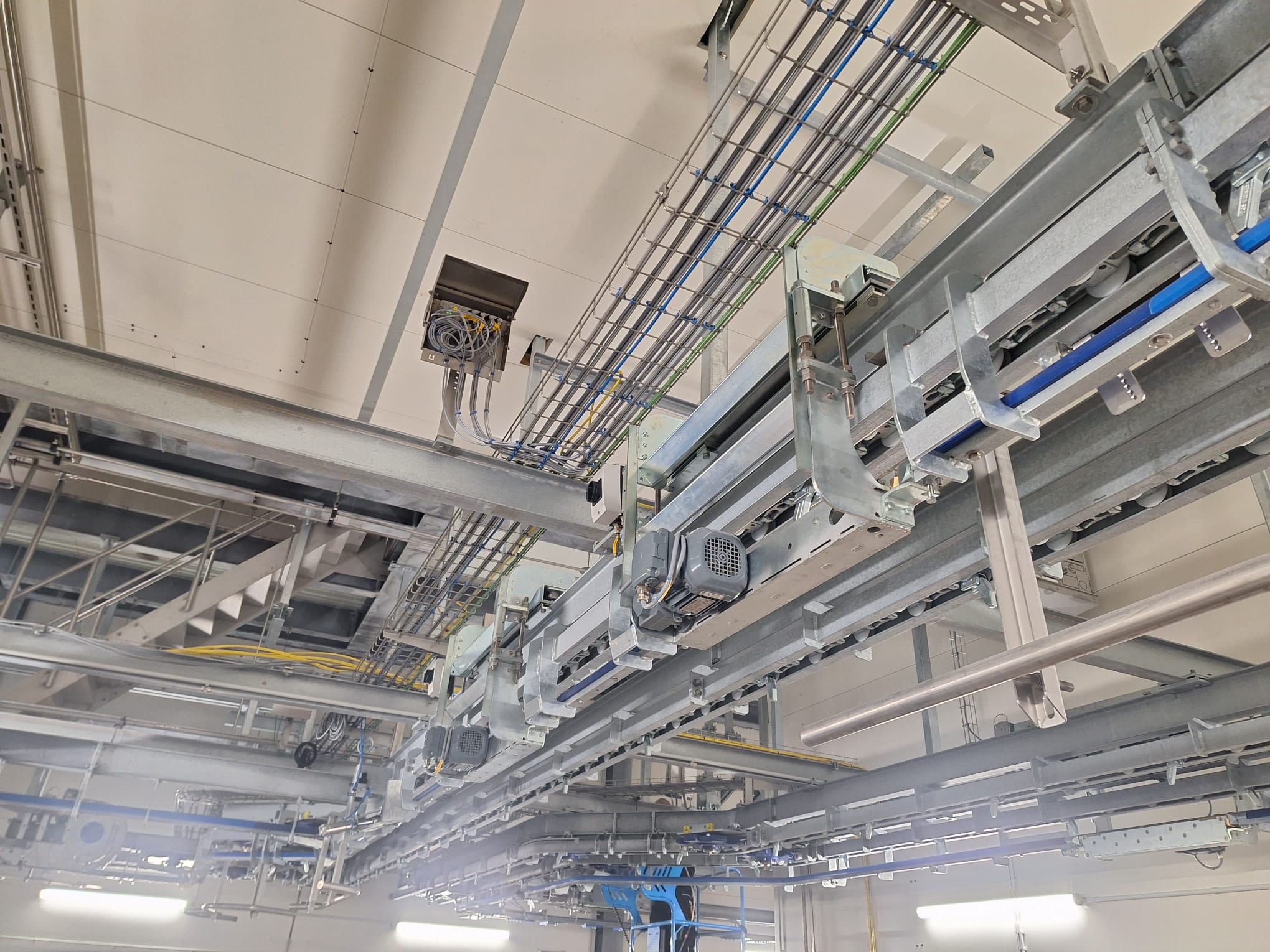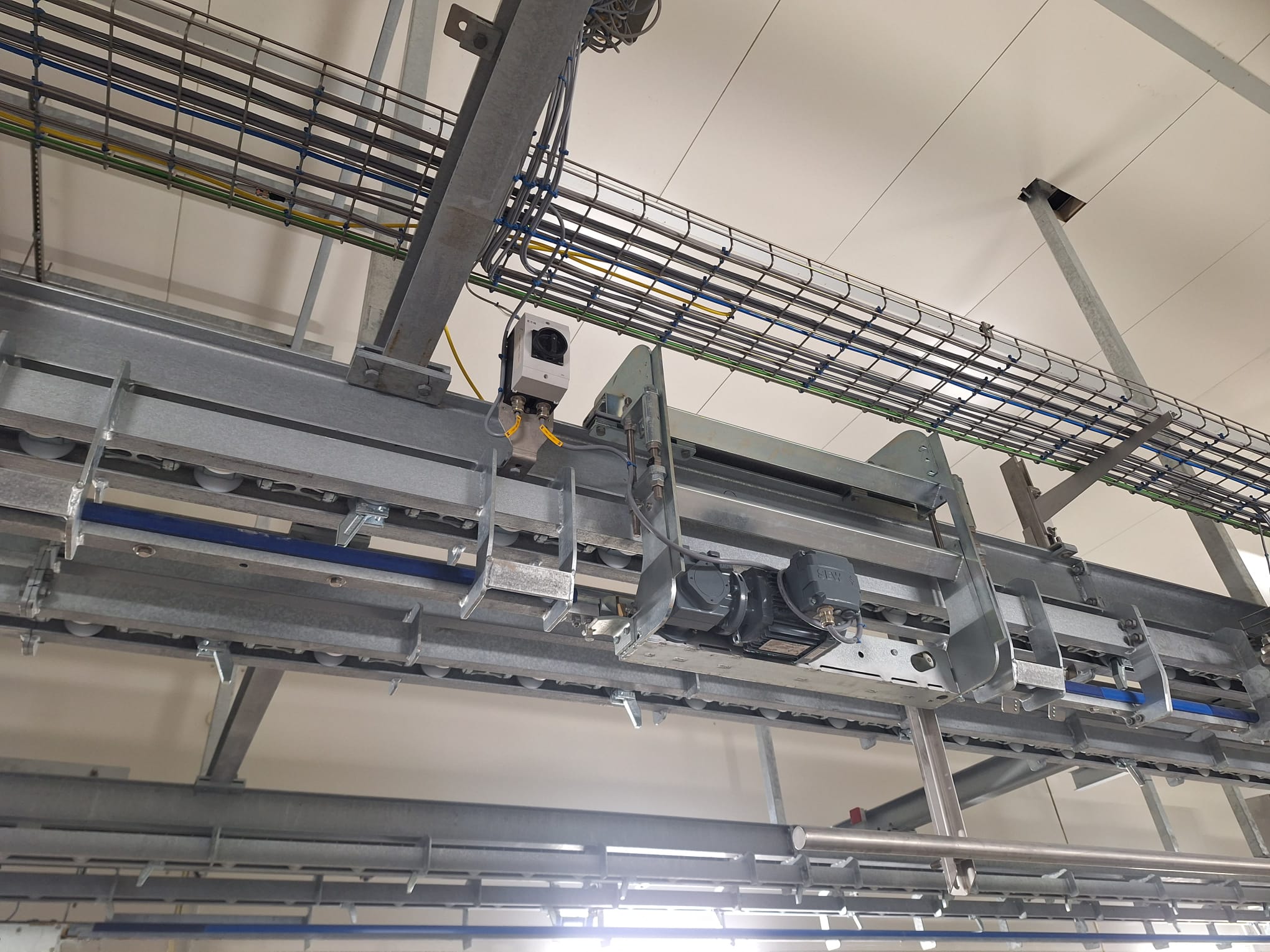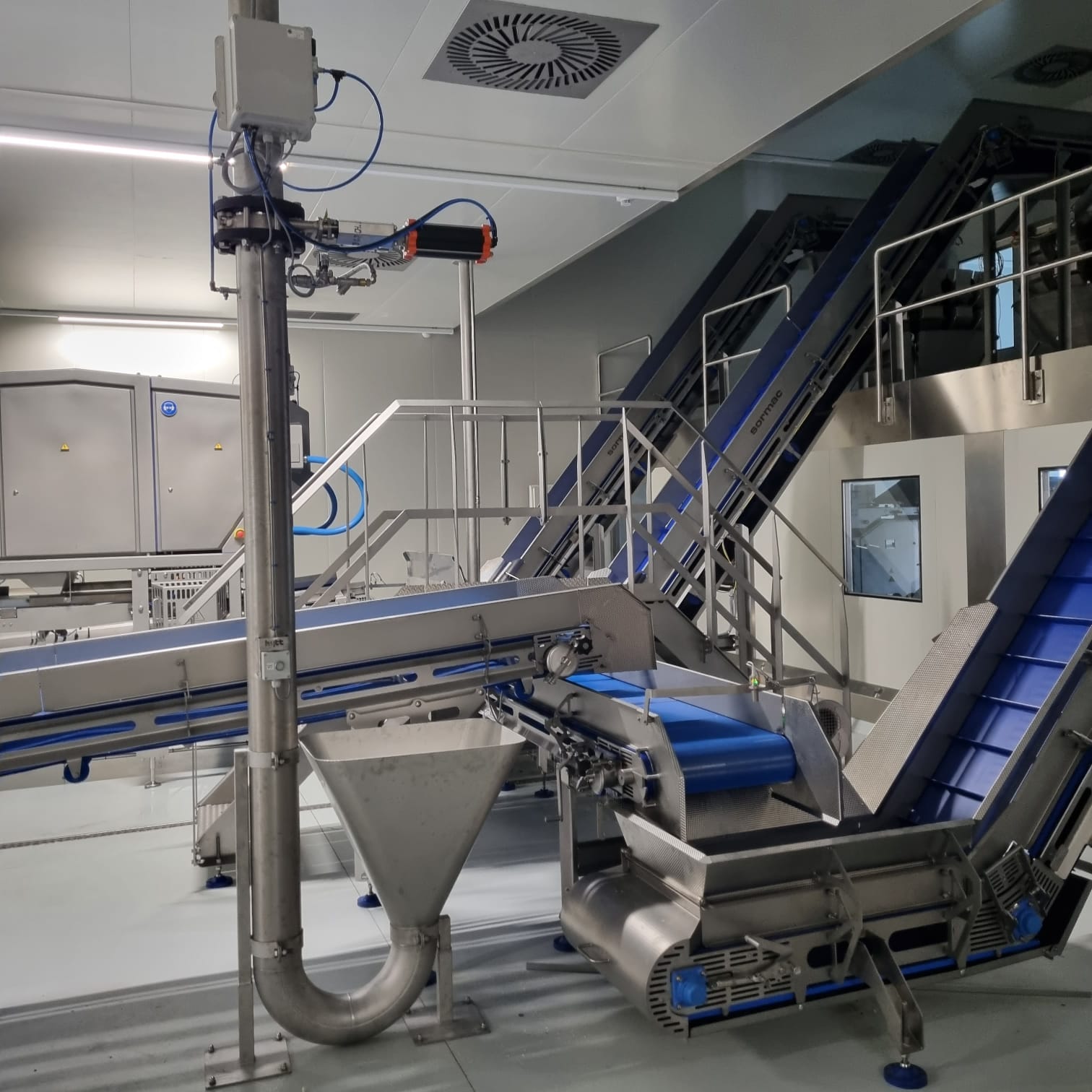Weighing of meat products
The weight of a meat product determines a large part of the price, but weighing can also help determine the efficiency of some processes. That is why we offer hanging belt scales and weighing systems for different areas of the farm. Thus, animals can already be weighed on arrival at the slaughterhouse. Then, for example, after classification at the end of the slaughter line, after dressing, before the carcass enters the dispatch and before it enters the cutting room. In addition, there is an optional weighing moment in rapid chilling. This provides valuable information on the efficiency of the chiller by revealing possible indigestion losses.
- Weighing at different points in the process
- Multiple weighing systems for suspended conveyors and belt conveyors
- Weighing data provides insight into process efficiency and contributes to product channelling and tracking & tracing
For suspended conveyor systems, DGS offers two different solutions: for a continuous process, we install motion scales, which means weighing while the conveyor is running. For start/stop processes, we supply static scales where weighing takes place when the conveyor is stationary. We also offer conveyors with a weighing unit, for in the deboning room, for example. The weighing moments provide data that give insight into the efficiency of processes and the tracking & tracing and channelling of the end product.
Personal advice
We are happy to discuss the possibilities with you.
The best slaughter software
To record all weighing in the slaughter process, you need software. That is why we have Twaka, our own software package. Recording inline weighings is only a small part of Twaka’s total package. So the package also offers automatic animal recognition based on ear tag and QR, or barcodes on labels. In addition, the package includes PM inspection, veterinary inspection and SEUROP classification. Further options include:
- Carcase storage and cold store management
- Identification and labelling of carcasses via 2D codes
- Identification of by-products and hides
- Recording of details
